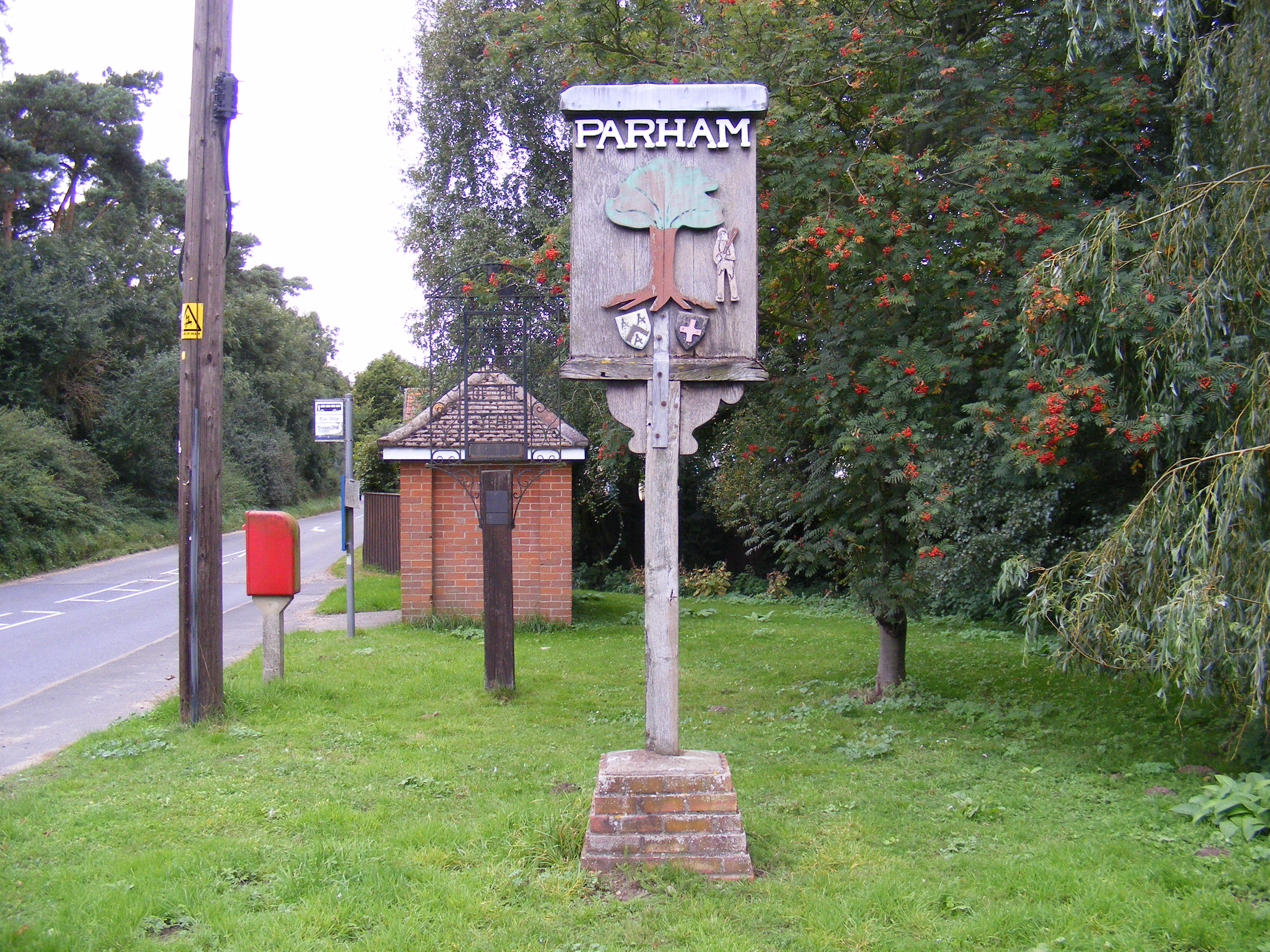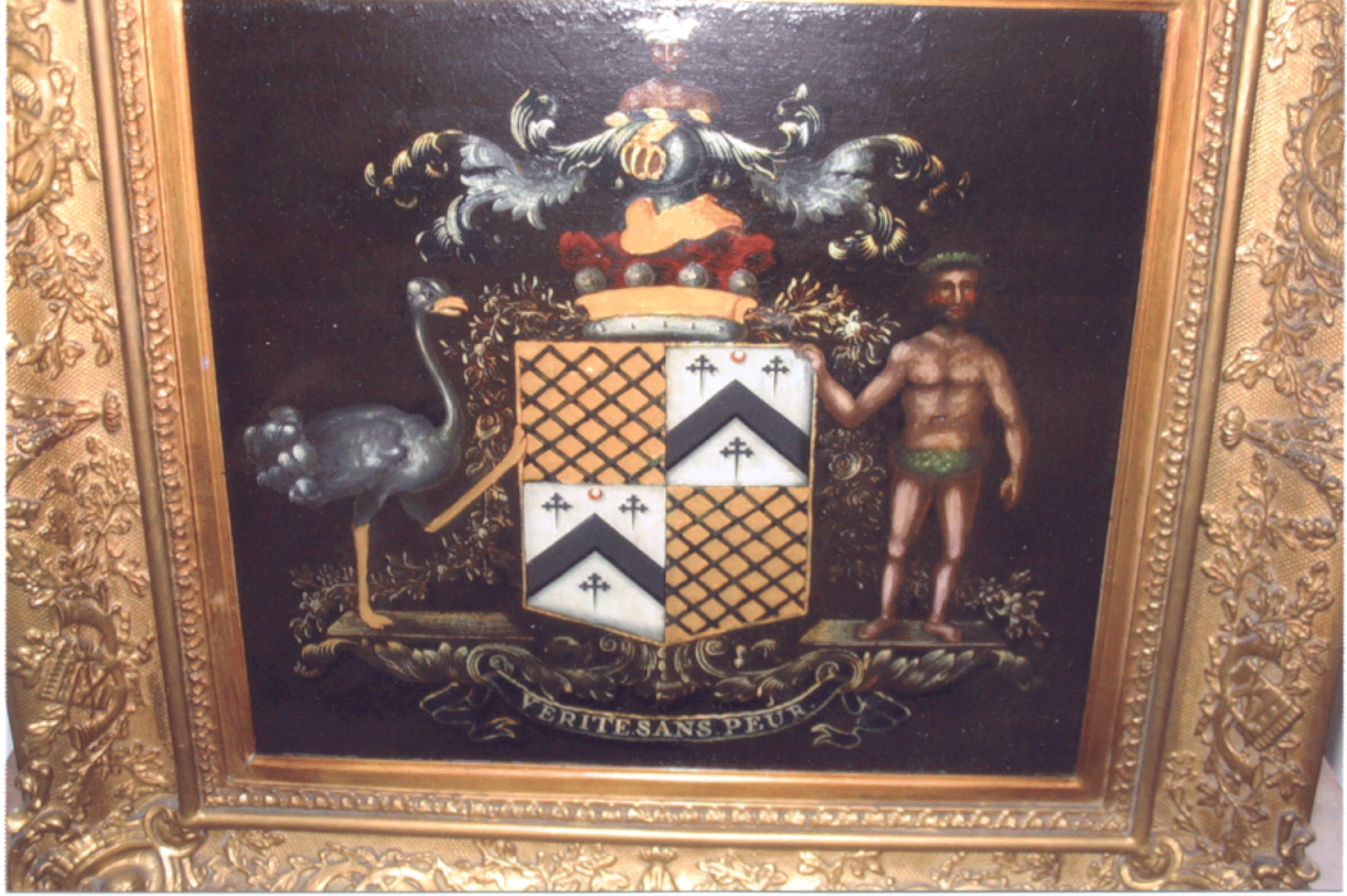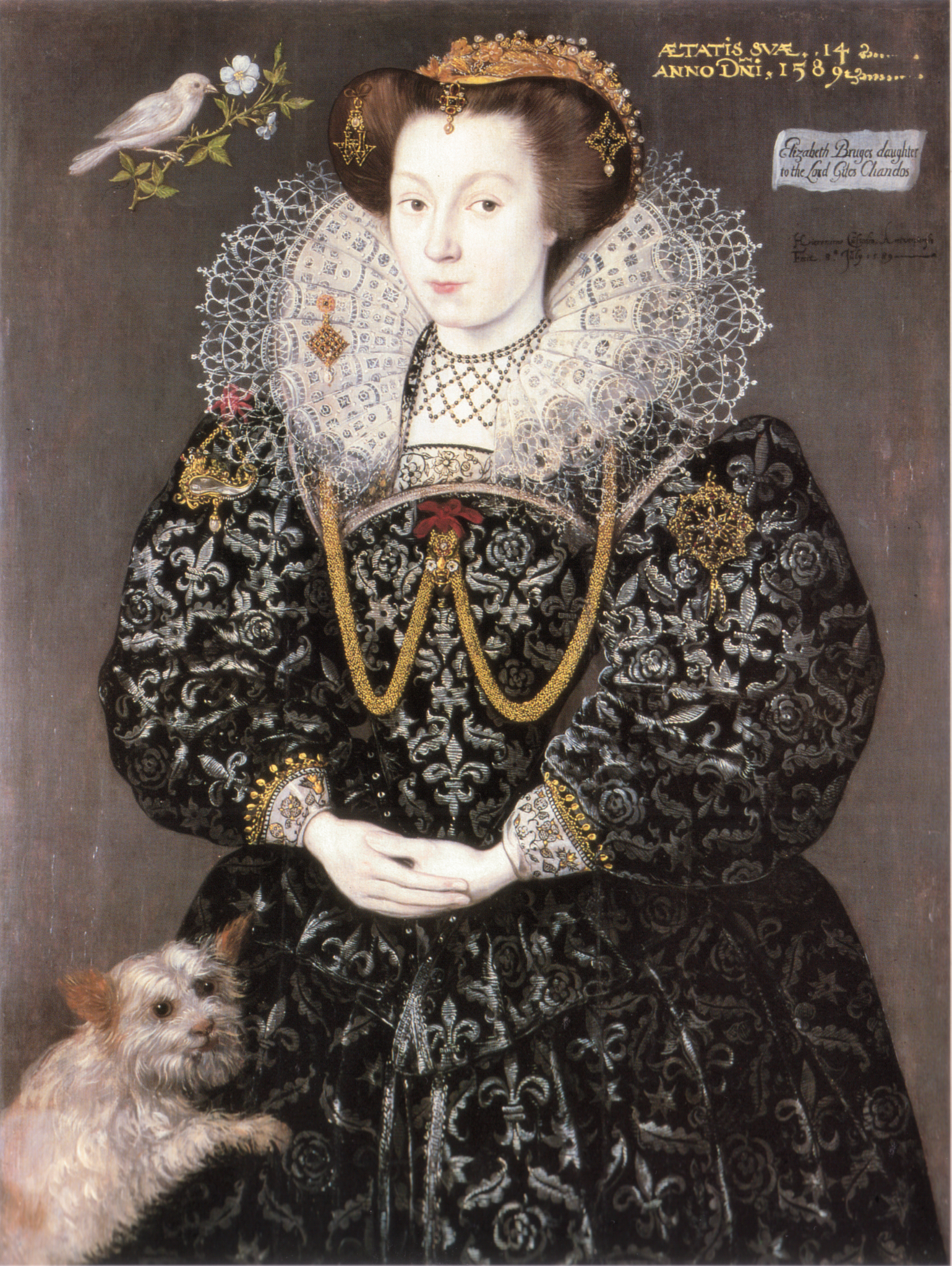|
Charles Willoughby, 2nd Baron Willoughby Of Parham
Charles Willoughby, 2nd Baron Willoughby of Parham (c.1536/7 – d. 1610–12) was the only son of William Willoughby, 1st Baron Willoughby of Parham, and Elizabeth Heneage. Family Charles Willoughby, born about 1536/7, was the only son of William Willoughby, 1st Baron Willoughby of Parham, Suffolk, and his first wife, Elizabeth Heneage, daughter and heir of Sir Thomas Heneage of Hainton, Lincolnshire, by Katherine Skipwith, daughter of Sir John Skipwith of Ormsby.. Career Willoughby matriculated at St. John's College, Cambridge at Easter, 1549. He succeeded to the title at his father's death on 30 July 1570. He held administrative offices in Lincolnshire, and was one of the commissioners who tried Philip Howard, 20th Earl of Arundel, for treason on 14 April 1589. Willoughby died between October 1610 and 26 October 1612. He was predeceased by his eldest son and heir, William, and the title passed to William's eldest son, who succeeded as 3rd Baron Willoughby of Parham. The 3rd ... [...More Info...] [...Related Items...] OR: [Wikipedia] [Google] [Baidu] |
Parham, Suffolk
Parham is a village and civil parish in the East Suffolk district of Suffolk in eastern England. Located seven miles north of Woodbridge, in 2005 it had a population of 300, reducing to 263 at the 2011 census and according to the 2011 census there were 129 males and 134 females living at this time. The flint-built parish church of St Mary, though restored in 1886, dates from the late 14th Century and was likely built for William de Ufford. The Rood screen is from the 15th Century. Parham is located on the B1116. William Willoughby, 1st Baron Willoughby of Parham is interred in the church, too. Parham Airfield Museum is located nearby. Parham railway station, on the Framlingham Branch, was shut to passenger traffic in November 1952. Between 1870 and 1872 John Marius Wilson's Imperial Gazetteer visited Parham and wrote the following as an entry for the parish.PARHAM, a village and a parish in Plomesgate district, Suffolk. The village stands on the river Ore, adjacent to t ... [...More Info...] [...Related Items...] OR: [Wikipedia] [Google] [Baidu] |
Henry FitzRoy, 1st Duke Of Richmond And Somerset
Henry FitzRoy, Duke of Richmond and Somerset, (15 June 1519 – 23 July 1536), was the son of King Henry VIII of England and his mistress, Elizabeth Blount, and the only child born out of wedlock whom Henry VIII acknowledged. He was the younger half-brother of Queen Mary I, as well as the older half-brother of Queen Elizabeth I and King Edward VI. Through his mother, he was the elder half-brother of the 4th Baroness Tailboys of Kyme and of the 2nd and 3rd Barons Tailboys of Kyme. He was named FitzRoy, which is derived from the Norman French term for "son of the king". Birth Henry FitzRoy was born in June 1519. His mother was Elizabeth Blount, Catherine of Aragon's lady-in-waiting, and his father was Henry VIII. FitzRoy was conceived when Queen Catherine was approaching her last confinement with another of Henry's children, a stillborn daughter born in November 1518. To avoid scandal, Blount was taken from Henry's court to the Augustinian priory of St Lawrence at Blac ... [...More Info...] [...Related Items...] OR: [Wikipedia] [Google] [Baidu] |
1530s Births
Year 153 ( CLIII) was a common year starting on Sunday (link will display the full calendar) of the Julian calendar. At the time, it was known as the Year of the Consulship of Rusticus and Rufinus (or, less frequently, year 906 ''Ab urbe condita''). The denomination 153 for this year has been used since the early medieval period, when the Anno Domini calendar era became the prevalent method in Europe for naming years. Events By place Roman Empire * Minor uprisings occur in Roman Egypt against Roman rule. Asia * Change of era name from ''Yuanjia'' (3rd year) to ''Yongxing'' of the Chinese Han Dynasty. Births * Didia Clara, daughter of Didius Julianus * Kong Rong, Chinese official and warlord (d. 208) * Zhang Hong, Chinese official and politician (d. 212) Deaths *Tiberius Julius Rhoemetalces Rhoemetalces, also known as Rhoimetalces ( el, Τιβέριος Ἰούλιος Ροιμητάλκης, fl. 2nd century AD; died 153), was a Roman client king of ... [...More Info...] [...Related Items...] OR: [Wikipedia] [Google] [Baidu] |
1603 Deaths
Sixteen or 16 may refer to: *16 (number), the natural number following 15 and preceding 17 *one of the years 16 BC, AD 16, 1916, 2016 Films * '' Pathinaaru'' or ''Sixteen'', a 2010 Tamil film * ''Sixteen'' (1943 film), a 1943 Argentine film directed by Carlos Hugo Christensen * ''Sixteen'' (2013 Indian film), a 2013 Hindi film * ''Sixteen'' (2013 British film), a 2013 British film by director Rob Brown Music *The Sixteen, an English choir * 16 (band), a sludge metal band * Sixteen (Polish band), a Polish band Albums * ''16'' (Robin album), a 2014 album by Robin * 16 (Madhouse album), a 1987 album by Madhouse * ''Sixteen'' (album), a 1983 album by Stacy Lattisaw *''Sixteen'' , a 2005 album by Shook Ones * ''16'', a 2020 album by Wejdene Songs * "16" (Sneaky Sound System song), 2009 * "Sixteen" (Thomas Rhett song), 2017 * "Sixteen" (Ellie Goulding song), 2019 *"16", by Craig David from ''Following My Intuition'', 2016 *"16", by Green Day from ''39/Smooth'', 1990 *"16", ... [...More Info...] [...Related Items...] OR: [Wikipedia] [Google] [Baidu] |
Baron Willoughby Of Parham
Baron Willoughby of Parham was a title in the Peerage of England with two creations. The first creation was for Sir William Willoughby who was raised to the peerage under letters patent in 1547, with the remainder to his heirs male of body. An error in identifying the heir in 1680 resulted in an inadvertent novel creation by writ in 1680, without the restriction on inheritance by gender.Cruise on dignities, pg 202 The creation of the barony gave the right to a hereditary peerage and seat in the House of Lords, the upper house of Parliament. The barony was created on 20 February 1547 for Sir William Willoughby, a descendant of William Willoughby, 5th Baron Willoughby de Eresby living 1370 to 1409. From his son Charles Willoughby, 2nd Baron Willoughby of Parham, descended a senior male line that went extinct on the death of Charles Willoughby, 10th Baron Willoughby of Parham in 1679. At the time, the male line of Sir Ambroise Willoughby, the second son of the 2nd Baron, was wron ... [...More Info...] [...Related Items...] OR: [Wikipedia] [Google] [Baidu] |
Elizabeth Brydges
Elizabeth Brydges (c. 1575–1617) was a courtier and aristocrat, Maid of Honour to Elizabeth I, and victim of bigamy. Elizabeth Brydges was a daughter of Giles Brydges, 3rd Baron Chandos and Frances Clinton, who lived at Sudeley Castle. Life at Court An entertainment for Queen Elizabeth at Sudeley in 1592 presented Elizabeth Brydges as Daphne, articulate, loyal, and chaste. In the pageant "Daphne" escaped from the laurel tree and ran to the queen. Soon after she joined the royal household as a Maiden of Honour. In December 1593 it was said the "young Earl of Bedford was paying his addresses to Mrs Bridges, the lord Chandos' heir." At court in the 1590s, she obtained money from Charles Lister of New Windsor (d. 1613) and promised to marry him, and he complained in 1598 that he had loaned her more than £3000 and bankrupted himself. Brydges invested £150 of Lister's money in the Earl of Essex's assault on Cadiz. Around this time Brydges may have had some kind of affair with Ess ... [...More Info...] [...Related Items...] OR: [Wikipedia] [Google] [Baidu] |
Grey Brydges, 5th Baron Chandos
Grey Brydges, 5th Baron Chandos (10 August 1621) of Sudeley Castle in Gloucestershire, was an English nobleman and courtier. Early life He was the only son of William Brydges, 4th Baron Chandos, who died on 18 November 1602, and Mary Hopton, who was daughter of Sir Owen Hopton. He was M.P. for Cricklade, in 1597. Brydges and his family were friendly with Robert Devereux, 2nd Earl of Essex. His father visited Essex at Essex House on the Sunday morning (8 February 1601) of Essex's insurrection, but he was not deemed by the government to be implicated in the conspiracy. The son, Grey Brydges, was, however, suspected of immediate complicity, and was sent to the Fleet Prison with Henry Cuffe and others; but he was soon released. Courtier and grandee Grey Brydges succeeded his father as Baron Chandos in 1602, attended King James I of England's initial parliament on 19 March 1604, and was made Knight of the Bath, when Prince Charles Stewart was created Duke of York in January 16 ... [...More Info...] [...Related Items...] OR: [Wikipedia] [Google] [Baidu] |
Dudley Carleton, 1st Viscount Dorchester
Dudley Carleton, 1st Viscount Dorchester (10 March 1573 – 15 February 1632) was an English art collector, diplomat and Secretary of State. Early life He was the second son of Anthony Carleton of Brightwell Baldwin, Oxfordshire, and of Joyce Goodwin, daughter of John Goodwin of Winchendon, Buckinghamshire. He was born on 10 March 1573, and educated at Westminster School and Christ Church, Oxford, where he graduated B.A, in 1595, M.A. in 1600. After graduating he took employment with Sir Edward Norreys at Ostend, as secretary. In 1598 he attended Francis Norreys, nephew of Sir Edward, on a diplomatic mission to Paris led by Charles Howard, 1st Earl of Nottingham.Hugh Trevor-Roper, ''Europe's Physician: The Various Life of Sir Theodore de Mayerne'' (2006), p. 103. In 1603 he became secretary to Thomas Parry, ambassador in Paris, but left the position shortly, for one in the household of Henry Percy, 9th Earl of Northumberland. Carleton was returned to the parliament of 16 ... [...More Info...] [...Related Items...] OR: [Wikipedia] [Google] [Baidu] |
John Chamberlain (letter Writer)
John Chamberlain (1553–1628) was the author of a series of letters written in England from 1597 to 1626, notable for their historical value and their literary qualities. In the view of historian Wallace Notestein, Chamberlain's letters "constitute the first considerable body of letters in English history and literature that the modern reader can easily follow". They are an essential source for scholars who study the period. Life Chamberlain's father Richard was a successful ironmonger, also Sheriff of London and twice Master of the Worshipful Company of Ironmongers, who left his son enough money to live on for the rest of his life without needing to earn a living. His mother, Anne, was the daughter of Robert Downe, an ironmonger and alderman. Though unambitious for himself, Chamberlain used his network of friends in high places to assist the career of Dudley Carleton, who rose from a minor position in the diplomatic service to become Secretary of State shortly after Chamber ... [...More Info...] [...Related Items...] OR: [Wikipedia] [Google] [Baidu] |
Maid Of Honour
A maid of honour is a junior attendant of a queen in royal households. The position was and is junior to the lady-in-waiting. The equivalent title and office has historically been used in most European royal courts. Role Traditionally, a queen regnant had eight maids of honour, while a queen consort had four; Queen Anne Boleyn, however, had over 60. A maid of honour was a maiden, meaning that she had never been married (and therefore was ostensibly a virgin), and was usually young and a member of the nobility. Maids of honour were commonly in their sixteenth year or older, although Lady Jane Grey served as a maid of honour to Queen Catherine Parr in about 1546–48, when Jane was only about ten to twelve years old. Under Mary I and Elizabeth I, maids of honour were at court as a kind of finishing school, with the hope of making a good marriage. Elizabeth Knollys was a maid of the court at the age of nine. Some of the maids of honour were paid, while others were not. In the 19t ... [...More Info...] [...Related Items...] OR: [Wikipedia] [Google] [Baidu] |
Elizabeth Wriothesley, Countess Of Southampton
Elizabeth Wriothesley (''née'' Vernon), Countess of Southampton (11 January 1572 – 23 November 1655) was one of the chief ladies-in-waiting to Elizabeth I of England in the later years of her reign. Family Elizabeth Vernon was the granddaughter of George Vernon (d. 1555), and the daughter of John Vernon (d. 1592) of Hodnet, Shropshire, by Elizabeth Devereux (c. 1541-c. 1583) the daughter of Sir Richard Devereux (d. 13 October 1547) of Weobley by his wife, Dorothy Hastings, daughter of George Hastings, 1st Earl of Huntingdon (1487–1544). She was the sister of Sir Robert Vernon, Comptroller of the Household to Queen Elizabeth I, and of Susan Vernon, second wife of Sir Walter Leveson, and a first cousin of Robert Devereux, 2nd Earl of Essex. Her paternal great-grandfather, Humphrey Vernon, was the grandson of John Talbot, 2nd Earl of Shrewsbury and his wife, Lady Elizabeth Butler, the daughter of James Butler, 4th Earl of Ormond. Humphrey's wife, Alice Ludlow, was the g ... [...More Info...] [...Related Items...] OR: [Wikipedia] [Google] [Baidu] |
Primero
Primero (in English also called Primus, ', or in Italian '' or Spanish ''Primera'')'', is a 16th-century gambling card game of which the earliest reference dates back to 1526. Primero is closely related to the game of primo visto (a.k.a. prima-vista, and various other spellings), if not the same. It is also believed to be one of the ancestors to the modern game of poker, to which it is strikingly similar. The gambling game with this name goes back to the 16th century, being known to Gerolamo Cardano as ', which he thought of as the noblest of all card games, to François Rabelais as ', and to Shakespeare as primero. The origins of primero It still seems uncertain whether the game of primero is of Spanish or Italian origin. Although Daines Barrington is of the opinion that it is of Spanish origin, a poem of Francesco Berni is the earliest known writing to mention the game; it affords proof that it was at least commonly played in Italy at the beginning of the 16th century. His ... [...More Info...] [...Related Items...] OR: [Wikipedia] [Google] [Baidu] |






_(cropped).jpg)
